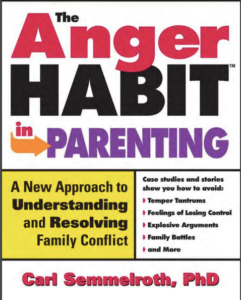Joy at Work Organizing Your Professional Life: Book Summary
Hello,
I am Dr. Raman Kumar Biswas. Today I will explain the role of tidying up in your workplace or at the organization. This is the book review and the summary of the book, Joy at Work Organiging your Professional life. I recommend reading the original book to learn more about joy at work.
Book Review and Summary: Joy at work organizing your professional life
Let’s get started.
Life is more than just checking things off a to-do list. The workplace is a magnet for clutter and mess. Wasteful meetings, disorganized paper, endless emails, and unnecessary tasks are the modern-day hazards of working. One of the best ways to restore order to our jobs, our careers, and our lives is by tidying up.
This summary is not just about how to tidy up the workplace. It is about how to put in order the physical and non-physical aspects of your job. It is also about making better decisions and how to spark joy in your career.
Keep in mind that the key to success when tidying this
Tidy by category quickly and completely all in one go
Whether tidying your workplace or tidying your home. This is the essence of the KonMori Method
Does this spark Joy?
This question is the key to the KonMori Method. It serves as a simple but very effective tool for tidying the home as a personal, private space. We take each item in our hands and choose only those that spark joy, letting go of the rest.
It may sound hard but tidying the physical workplace is much simpler than tidying a home. For one thing, workplaces are far smaller with fewer categories making it easier to decide what items to keep and where to keep them. And it takes much less time.

Download From Google Drive EPUB: Joy at Work Organizing Your Professional Life
Many people feel defeated at the mere suggestion of tidying up; they believe they can not keep up the act. Also, quite a few people don’t believe they can find joy in their job. However, it is possible to spark joy at work.
Did you know?
In a survey of 1,000 working American adults, 90% felt that clutter hurt their lives.
Tidying improves effectiveness at work
When we asked why some workers found it hard to be effective at work and in their lives, the top reasons they gave were lowered productivity, a negative mindset, reduced motivation, bad health, and diminished happiness. Clutter is a factor that adversely affects health.
According to a study by scientists at UCLA, being surrounded by too many things increases cortisol levels, a primary stress hormone. Chronically high levels of cortisol can make us more susceptible to depression, heart disease, hypertension, insomnia, and other mental disorders.
” Clutter, it seems, is a magnet for misery- Marie Kondo
It is not just individuals who are affected by clutter; clutter is bad for businesses too. Sometimes, we spend hours looking for something at the office; sometimes, we lose it completely. It might be a file folder, a calculator, a memory drive, a briefcase, a laptop, or a cell phone. Not only does replacing lost items cost money, but losing them in the first place causes emotional stress and creates unnecessary waste that damages the environment. But the greatest loss is the time spent looking for them.
Several studies on employee evaluations in the workplace have shown that the tidier a person’s space, the more likely others are to see them as ambitious, intelligent, and calm, while yet another study showed that such people are seen as confident, friendly, industrious, and kind. Tidying up also gives rise to the Pygmalion effect.
The Pygmalion effect is the phenomenon whereby students’ grades improve when they sense that their teachers expect them to excel.
The Pygmalion effect, in work settings, explains why employees’ performance rises or declines to the level of expectations set for them. The findings of these studies can be summarized in three simple points.
A tidy desk results in a higher evaluation of our capacity.
- This raises our self-esteem and increases our motivation.
As a result, we work harder, and our performance improves.
Clutter doesn’t necessarily improve creativity.
Concerning creativity and inspiration, some individuals believe that a messy environment boosts creative thinking. However, it doesn’t matter which is better a clutter-free desk or one that is chaos. The most important thing is
That, you are aware of the kind of environment that brings you joy at work; that, you know your joy criteria. And tidying up is one of the best ways to find out. Often, it is only after tidying up that people realize what kind of environment sparks joy for them.
Are you the type who can tap into your creativity more easily once you’ve tidied up, or the type who is more creative amid clutter? No matter who you are, the tidying process will help you discover the kind of joyful workspace that makes your creativity bloom.
Did you know?
In the United States alone, replacing lost items leads to a loss in productivity. When converted to cash, amounts to an estimated US$89 billion annually. This is more than double the combined profit of the world’s five largest corporations.
Maintaining a lifestyle of tidiness requires the right mindset
Most people who have succeeded in tidying up once and for all, start with a clear idea of who they want to be and what kind of lifestyle they want. But people who launch into tidying without a clear idea of why they are doing it, or with the hope that they can get someone else to do it for them, often revert to clutter even if they succeed in tidying up the first time.
✦ Visualizing your ideal work-life is one of the ways to maintain a lifestyle of tidying.
If you want to tidy up so completely that you never revert to clutter again, aim for one simple goal: knowing where everything in your workspace belongs. How can you achieve that? Tidy your entire workspace by category, all in one go. If you tidy the top of your desk today, the first drawer tomorrow, and another the next day. If you decide to throw out things little by little when you have time, you’ll never put your space in order.
Set aside a block of time for tidying. Then, gather all the items you have by category and decide which you should keep and which you should discard. Once you’ve done that, decide where to store the things you are keeping.
To tidy up properly, follow these steps in that order. If it’s a real challenge to make time for tidying, if you can’t set aside a block of five hours straight, try splitting the process into several sessions. That’s what makes it possible to keep your space tidy. By learning the proper way to tidy up, anyone can achieve a joyful workspace and never rebound.
When tidying, focus on the positive, on the things you love, that way, you will find tidying more interesting.
No matter what your ideal work-life is, the final goal is the same: to be able to work with joy. So when tidying up, what matters most is to choose things that contribute to your happiness and appreciate what you keep.
There are three types of things that you should keep.
- The first are things that spark joy for you, such as a favorite pen, or a photo of your loved ones.
- The second type is things that are functional and aid your work, things you frequently use like staples or heavy-duty packaging tape. They don’t particularly spark joy, but they make your daily work easier. Just having them lets you relax and focus on your job.
- The third type is things that will lead to future joy. Receipts, for example, don’t inspire much of a thrill, but they have the obvious merit of allowing you to be reimbursed when you use them to claim expenses.
Download From Google Drive EPUB: Joy at Work Organizing Your Professional Life

Did you know?
A study examining 558 words for different emotions in English concluded that 62% of them were negative, compared to only 38% positive.
A cardinal rule of tidying is to tidy only spaces for which you have sole responsibility
Tidying only those spaces for which you have sole responsibility is one of the most important rules of tidying. If there are any spaces like a storage area for supplies, a break room, or a meeting room, just ignore them for now, even if they aren’t as tidy as you’d like them.
If you work at home, deal with work-related items separately from personal items. For example, if some of your books and documents are work-related while others are not, identify only the work-related items and focus on tidying them, leaving personal items for a later date when you are ready to tidy your home.
Tidying Books.
Tidying books is a powerful means of self-discovery. The ones you choose to keep because they spark joy reveal your values. They also help you to regain your love and passion for your work. Tidying up is an epic voyage of self-discovery.
Tidying Papers.
The rule of thumb for papers is to discard everything. This does not mean that we should eliminate papers; it just means we should choose only those that are necessary and discard the rest.
There is nothing more bothersome in our workspace than papers, which seem to accumulate before we realize it.
The more papers we accumulate, the more time it takes to find particular documents or reports, and the harder they are to put in order. As with the other categories, start by gathering all your papers together in one spot and looking at each one. Papers are the only category that can’t be selected by asking yourself if they spark joy.
Instead, you must check the content. Even papers that are in envelopes should be taken out and checked page by page. It can be helpful to sort papers into categories while you are skimming through the content. This makes filing them when you’re done quicker and easier. Papers can be broadly divided into three categories:
- Pending
- Save because you have to, and
- Save because you want to.
The pending category includes papers that need some kind of action, such as outstanding bills and project proposals that must be reviewed. All of them should be stored in one upright filing box until you’ve dealt with them. That way, they won’t become jumbled up with papers in other categories.
Papers we’re required to save include certain types of reports, statements, contracts, and other documents for a specific period, regardless of whether or not they spark joy. Sort them by category and file them in a filing cabinet or file folders on a shelf. If you don’t need to keep the originals, you can also scan them and store them electronically.
For papers, you want to save for other reasons. These might include documents you want to keep as a reference or ones that spark joy for you. Whether or not you keep these is entirely up to your discretion.
Download From Google Drive EPUB: Joy at Work Organizing Your Professional Life
Did you know?
Tidying up your papers makes them incredibly easy to manage because you know exactly how many of each type you have and where they are.
Tidying digital documents does not require lots of folders
To know if you should delete a digital document or not, ask yourself the following questions: Do I need this document to get my job done? Will this document provide me with guidance or inspiration for future work? Does this document spark joy? If the answer is no to all these questions, delete the document.
You may remember the contents of the document just from the file name, but you may need to open it. If a subfolder shares files on a topic that you’re not keeping, go ahead and delete the entire subfolder. Search technology has improved, and this makes organizing your documents much easier.
The usefulness of your folders will improve as you consistently place the main ways people tend to approach email, and all three can lead to problems.
- Frequent filers: Some people constantly clean their inboxes. They put down what they’re doing, read the message, and then file it away immediately. Here’s the problem: a single email interruption can require 26 minutes to pick up where you left off.
- Spring cleaners: A second way people handle email is to purge their inboxes every few months.
- No Filers: A third approach is to just let email accumulate in the inbox.
Managing email doesn’t have to be complicated – or time-consuming. Simply keep only what’s needed for the future and store email in a logical set of a few folders.
Processing your emails daily, reducing the number of emails you send to others, and also reducing the number of apps that are on your smartphone can aid productivity. Remember, you’re the boss of your technology. Let technology advance your work life and help you see more clearly how your work can be a source of joy.
Download From Google Drive EPUB: Joy at Work Organizing Your Professional Life
Tidying your Activities.
Don’t be so quick to say yes to every task that comes your way. The key to boosting joy at work is to spend more time on activities that bring joy and less time on activities that don’t. Three traps that can lead to activity clutter:
Over-earning by working too hard for the wrong results
Prioritizing urgent tasks over important ones, and,
Multitasking: contrary to what people believe, multitasking is a trap, and it does not always increase productivity.
Download From Google Drive EPUB: Joy at Work Organizing Your Professional Life
Did you know?
Research reveals two surprising facts about multitasking: First, it decreases productivity by as much as 40%. Second, those who multitask are typically the least capable of doing it successfully.
Focus more on stake decisions and the most valuable medium-stake ones while tidying decisions
No matter what type of work you do, you make thousands of decisions daily.
Many decisions are low-stakes ones made with little effort or awareness. We’d be completely overwhelmed if we needed to deliberately think about the best path to take when walking to our desk, which pens to use, and what to say in a quick email reply.
Other decisions come with high stakes and require focused attention. We don’t face these types of decisions often, but when we do, they rightfully take up a considerable amount of mental and emotional energy.
✦ Medium-stake decisions require more thought and effort than low-stake decisions. When you tidy up your decisions, you focus on what makes an impact.
You then sort through what’s worth your time and energy, and what should be eliminated, delegated, or automated. Your decisions are freed from the clutter of an overwhelming number of choices, and you connect to what you’re trying to accomplish.
Difficult decisions suddenly feel easier to make. When it comes to the important decisions that demand your time and energy, you’ll be more engaged and satisfied no matter what you pick.
Tidying your network.
Tidying your network involves tidying your social media pages. You can make your network a source of joy not only by having many followers but also by building one full of people whom you enjoy spending time with and helping. People who care about your development and success, and with whom you’re comfortable revealing your setbacks and seeking their counsel.
Growing your network is not only time-consuming but also potentially harmful to your psychological well-being.
Research has shown that the more time we spend on social media, the less happy we are. That’s because people usually only share good news on social media, while very few use it to share bad news. You may have connections in many places: LinkedIn, Facebook, and other social networks along with the contacts lists on your smartphone and email platform, however, using Marie’s approach to tidying, imagine your ideal work life.
Who are the people, and what kinds of people do you want to be surrounded by and spend your time with? Which contacts spark joy? The answers to these questions help you to know which connections or contacts you need to let go of.
Instead of blindly saying yes to every request for mentorship, advice, or other connections, build relationships that matter the most. Replace networking with high-quality connecting, substituting large networks that often have little substance with smaller networks of connections that truly spark joy.
Did you know? Researchers estimate that the number of decisions we make daily is 35,000. Despite the thousands of decisions, we make every day, another survey finds that people, on average, recall making only about seventy of them.
Tidying meetings increases active and effective participation
Before you start to tidy your meetings, think about what an “ideal meeting” looks like – both the meetings you attend and any you might formally lead. Even if you’re just starting your career and find yourself at the mercy of how others lead meetings, you must know what you want to get out of meetings.
Attending a lot of meetings doesn’t make you more valuable.
Do your best to get excused from any meeting that’s not necessary, doesn’t help realize a joyful future, or doesn’t spark joy.
There are two reasons usually don’t want to attend any given meeting: because it’s disorganized or because it’s not particularly relevant to their work. There are rules for tidying a meeting.
Rule #1: Show up. Sit up straight, pull yourself close to the table, and radiate positive energy. This is not the time to let your mind wander.
Rule #2: Come prepared. If a leader provides an agenda beforehand, make sure you’re ready.
Rule #3: Put away your electronics. It’s rude and sends the message that the meeting is unimportant and unworthy of your attention.
Rule #4: Listen. We should be able to learn from one another during meetings.
Rule #5: Speak up. There are times when you have unique information to share. Focus on advancing the
conversation with new information, a different perspective, or putting the discussion back on track.
Rule #6: Not harm. We’re responsible adults. Blaming others, cutting them off, or self–promoting creates dysfunction.
To run a tidy meeting, you must know what you want to accomplish, think carefully about participants, state goals of the meeting in the invitation, encourage participation, and set timelines.
Two reasons people usually don’t want to attend any given meeting: because it’s disorganized or because it’s not particularly relevant to their work.
Download From Google Drive EPUB: Joy at Work Organizing Your Professional Life
Tidying teams.
Given the nature of most jobs, it’s hard to experience joy at work if the teams. you’re on aren’t joyful. You can, however, seize the opportunity to improve your team, even without a formal leadership role, from an inefficient team doing uninspiring work into an organized one doing more enjoyable and higher-quality work.
Big teams can create big messes. Research shows that larger teams are less satisfying than smaller ones because, with so many other people around, there’s a good chance that there will be a lot of overlap in members’ contributions, making it more likely that teams become chaotic and disorganized.
Nevertheless, the success of a team is everyone’s responsibility, no matter their job title, seniority, or tenure, and this is a privilege for us to enjoy at work. Do your best to tidy your teams, and you’ll bring joy not just to yourself but to everyone else in the group.
Did you know?
Amazon CEO Jeff Bezos lives by the “two-pizza rule”
No team should be large enough that it needs to be fed with more than two pizzas. Research backs up Bezos’ rule of thumb. Studies peg the optimal size for most teams from four to six people if they’re trying to generate ideas, make decisions, or innovate, with teams of more than nine people pushing the limits of what’s effective.
Share the magic of tidying with others
By organizing your work, you’ve given yourself a gift that goes far beyond a tidy desk or clean inbox. You’ve taken back some control of your work life. What is next is to share the magic of tidying with others. Although you can’t force tidying on others, you can inspire them by sharing all that you’ve accomplished.
Invite colleagues to check out your workspace. Talk about your approach to managing your email and calendar. Show off your smartphone and computer desktop. Let people know how you’ve avoided getting bogged down by too many decisions. Keep building high-quality connections, and people will be moved to make their own. Explain how and why you politely request a meeting agenda.
By organizing your work, you’ve given yourself a gift that goes far beyond a tidy desk, orderly calendar, or clean inbox. You’ve taken back some control of your work life.
Don’t put undue pressure on yourself to be the company’s caretaker. Instead, ask yourself: What small things can I do to show care for the workplace? It could be as simple as occasionally cleaning up a dish in the kitchen. Share how tidying has transformed your work and life, and you’ll soon have others eager to transform their own.
You can add more joy to your workplace.
Tidying comes naturally as breathing. Tidying up can help you get a clear picture of the path that sparks joy for you. You see what’s close to your heart, what you’ve always wanted to do, and what challenges you want to take on.
Our work and our lives are the cumulative results of our past choices. Whatever happens is the result of our own decisions. If something you’re engaged in doesn’t bring you joy, remember that where you are now is the path that you chose in the past. Based on that understanding, ask yourself what you want to do next. If you choose to let something go, do it with gratitude, and if you choose to hold on to something, do it with conviction.
✦ Small actions can bring surprisingly big changes to an organization.
Knowing what sparks joy at work provides a guide for moving your job closer to your work-life vision. Enjoy your tidier workspace. Use the extra time and mental energy tidying created, to do tasks that bring greater joy.
Did you know?
A recent survey of 2000 Americans finds that most people believe that expressing gratitude to a coworker makes them feel happier and more fulfilled. Yet, that same survey finds that on a given day, only 10% of employees express gratitude to someone at work.
Conclusion
Tidying can make us aware of the vital role that each thing or person plays in our daily lives. Our work is the same and very essential. Finding meaning in our daily tasks makes our job worth doing, and this leads to joy. The attitude with which we approach our work is far more important than what kind of job we have.
When we’re happy and emanating good vibes while we work, as opposed to being stressed and irritable, we have a positive influence on those around us. The greater the number of people like this, the more such positive energy will spread, changing the world. Tidying is also the first and most effective step toward realizing your vision of a joyful career.
By trying the suggestions offered in this book for tidying up everything from physical clutter to networks, decision-making, and workspace, you can devote yourself to what you love and spark joy at work and in life.
Try this:
Think and get ideas about what sparks joy in your workspace. Give your imagination free rein and add lots of joy-plus touches.
It could be displaying a photo that brings back joyful memories, a small aroma item on your desk that will give your space a special fragrance, a beautiful candle on your desk as a decoration, or changing the background on your desktop computer to reflect each season.
Download From Google Drive EPUB: Joy at Work Organizing Your Professional Life

পারিবারিক কলহ দুর করুন A new approach Free eBook







More Stories
Student Protest in Bangladesh: Why?
How to write a Cover Letter
Life After Divorce